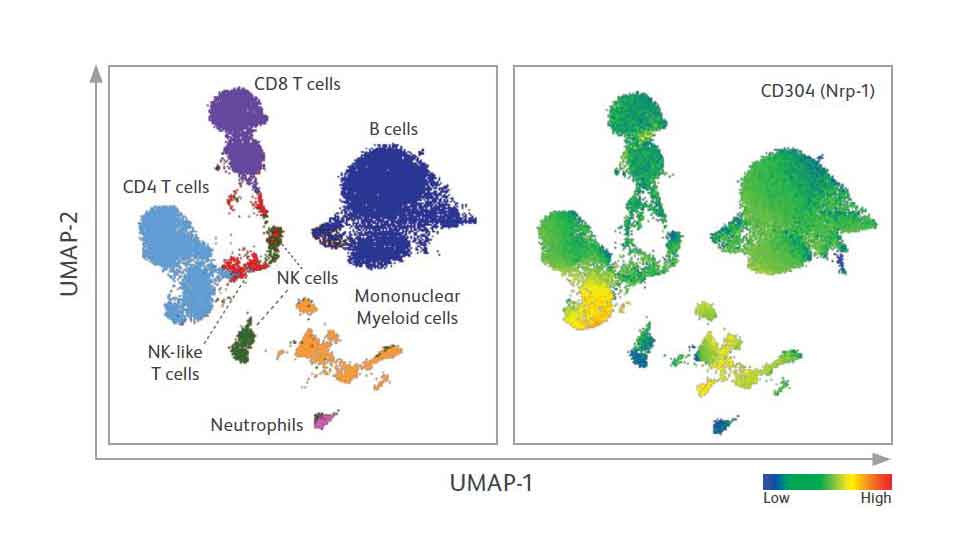Delineation of Functional Treg Subsets using Cell Surface Marker Expression
March 03, 2022
Regulatory T cells or Tregs are CD4 T cells that are essential for maintaining peripheral tolerance, preventing autoimmunity and limiting chronic inflammatory diseases.
Naturally occurring Tregs were first characterized within the CD4+CD25+ T cell populations. Tregs express the transcription factor Foxp3, which is essential for their function..
Over the years, specific Treg subsets have been identified, supported by the discovery of a growing number of cell surface markers. One such marker is neuropilin-1 (Nrp-1 or CD304), which distinguishes natural Tregs from induced Tregs in mice.
This is highlighted in the BD Biosciences application note featured here, which describes a study in which a 29-color panel was used to identify Treg subsets in cells from C57BL/6 mouse spleens. The data were acquired on a BD FACSymphony™ A5 Cell Analyzer and analyzed using FlowJo™ v10 Software.
Another surface marker described here is ectonucleoside triphosphate diphosphohydrolase 1 (NTDase 1 or CD39), which mediates adenosine-triggered immunosuppressive effects in both mice and humans. Both markers are potential immune checkpoint targets in cancer immunotherapy.
Learn more about the annotation of cell populations and the expression of the markers by downloading the delineation of functional Treg subsets application note.
